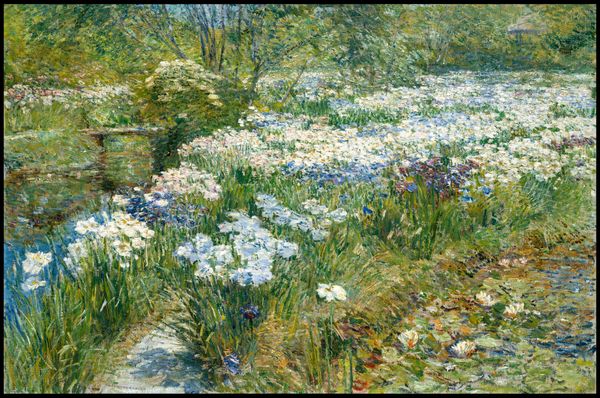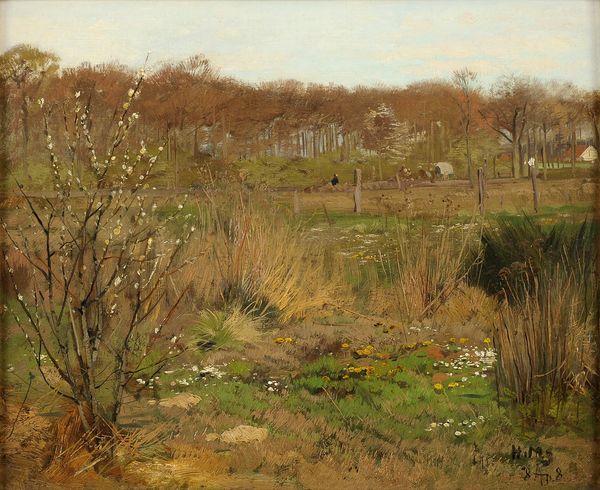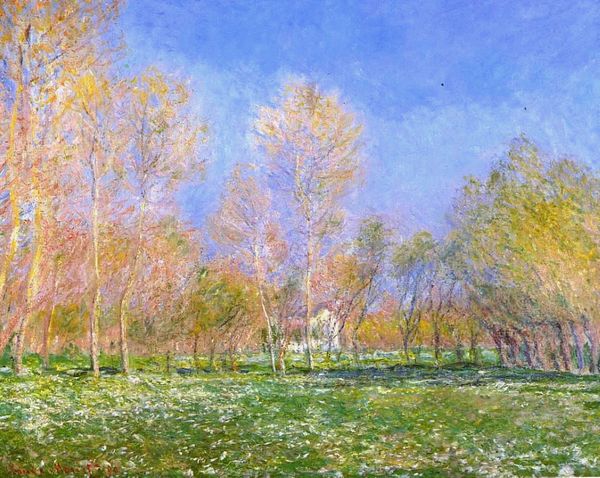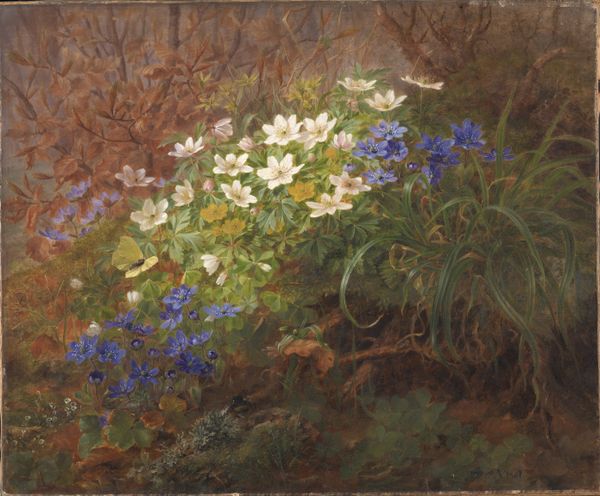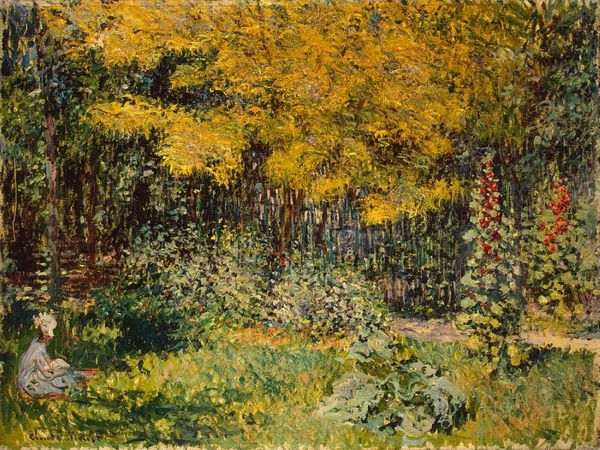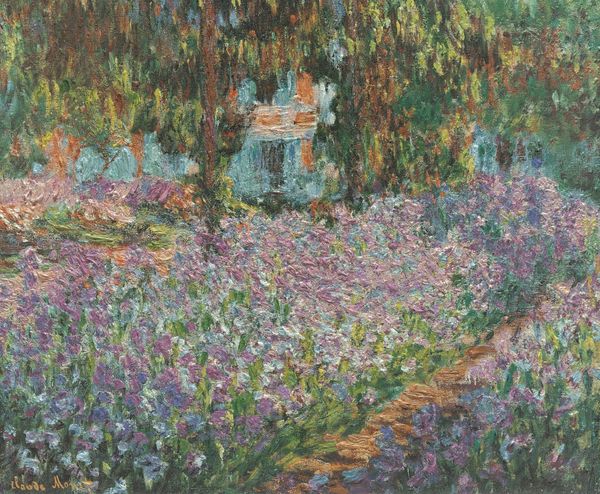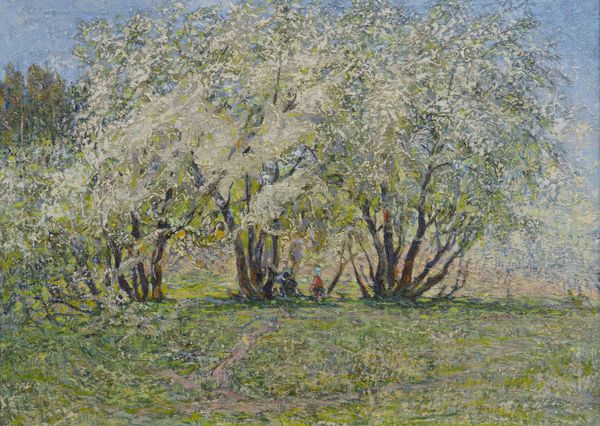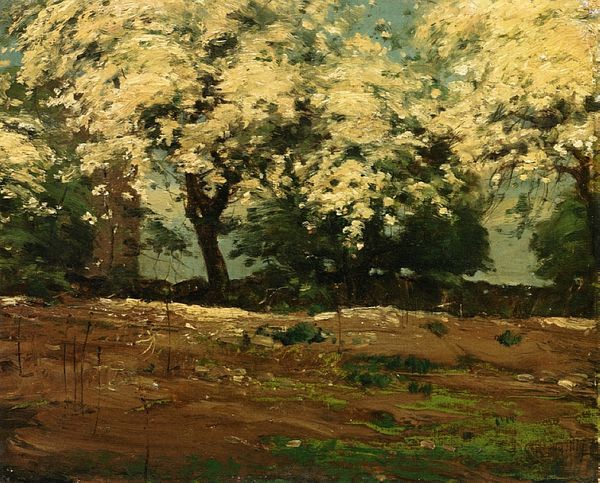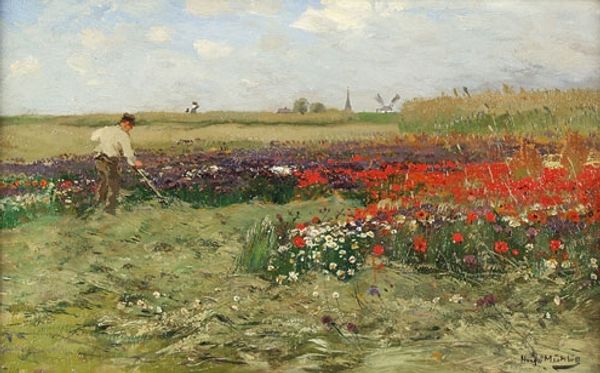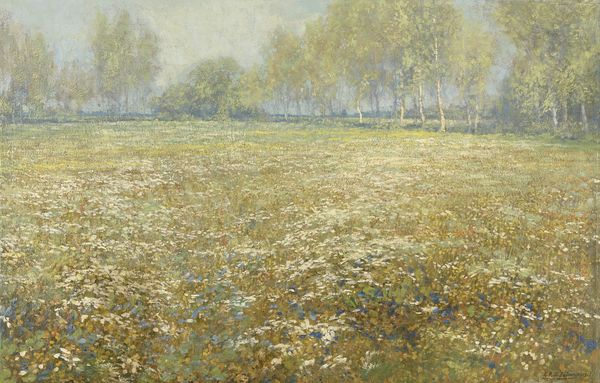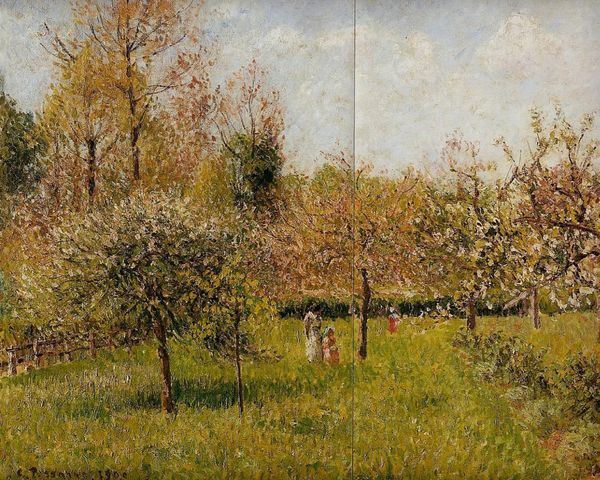
Dimensions: height 26.3 cm, width 41.6 cm, thickness 1.3 cm, depth 7 cm
Copyright: Rijks Museum: Open Domain
Editor: This painting, titled "Tulip Fields," is an oil on canvas piece, created sometime between 1880 and 1937 by Anton L. Koster. I’m really drawn to the texture of the paint; you can almost feel the thickness of the impasto technique. What stands out to you, looking at it? Curator: For me, it’s about the material reality behind the image. Consider the labor involved: cultivating the tulip fields, harvesting pigment, preparing the canvas, and the very act of applying paint. This painting embodies a system of production, not just a scene. Editor: So you’re thinking about the labor aspect, even in what seems like a pretty landscape? Curator: Absolutely. Impressionism, with its emphasis on capturing fleeting moments *en plein air*, often obscures the very material conditions that make such capture possible. The paint itself, thick and present, is evidence of the artist’s physical engagement and consumption of materials. Think about where the artist would have procured his material during this time period? Did Koster, who worked in a rural setting, likely produce his own pigment or purchase pre-made materials from the market in Amsterdam? Editor: I never really considered how intertwined art and labor were at the time. Did the availability of materials shape what and how Koster painted? Curator: Without question. The accessibility and cost of certain pigments, the quality of canvases available, these factors all impacted artistic choices. Koster's style emerges from specific historical conditions surrounding labor, production and market economy. What about you? Editor: This changes everything for me, I am viewing landscapes in a whole different light! Curator: That is a welcome shift! By engaging with art in such fashion, we not only see the work, we consider the whole historical, socio-economic and industrial environment around it.
Comments
No comments
Be the first to comment and join the conversation on the ultimate creative platform.

